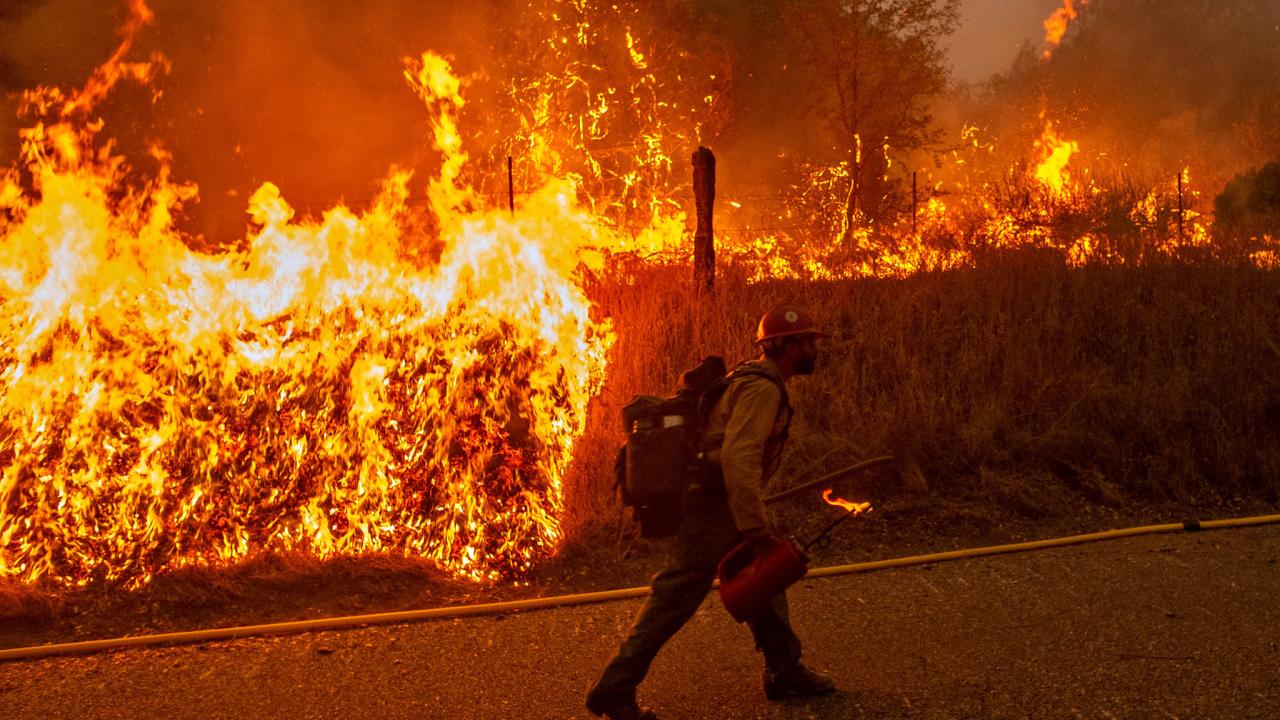Quick Summary
- The proportion of “good” to “bad” fire in the Sierra Nevada is severely out of balance compared to historical rates.
- Before 1850, many more acres burned each year compared to today.
- More than 90% of historic fire burned at low-moderate severity, which is beneficial for forest health.
- Today, the pattern is flipped. Less land burns, but up to 43% of what does burn comes as damaging, high-severity fire.
High-severity wildfire is increasing in Sierra Nevada and Southern Cascade forests and has been burning at unprecedented rates compared to the years before Euro-American settlement, according to a study from the Safford Lab at the University of California, Davis, and its collaborators. Those rates have especially shot up over the past decade.
For the study, published in the journal Ecosphere, scientists analyzed fire severity data from the U.S. Forest Service and Google Earth Engine, across seven major forest types.
They found that in low- and middle-elevation forest types, the average annual area that burned at low-to-moderate severity has decreased from more than 90% before 1850 to 60-70% today.
At the same time, the area burned annually at high severity has nearly quintupled, rising from less than 10% to 43% today. (High-severity burns are those where more than 95% of aboveground tree biomass is killed by fire.)
Lead author and UC Davis project scientist John N. Williams said this ratio is severely out of balance.
“We’re seeing more ‘bad fire’ and less ‘good fire,’” said Williams, who is the coordinator of the California Prescribed Fire Monitoring Program. “Any consolation we’d get from the idea that, ‘At least we’re burning more than we used to,’ isn’t really a consolation because it’s often coming in the form of the wrong kind of fire.”
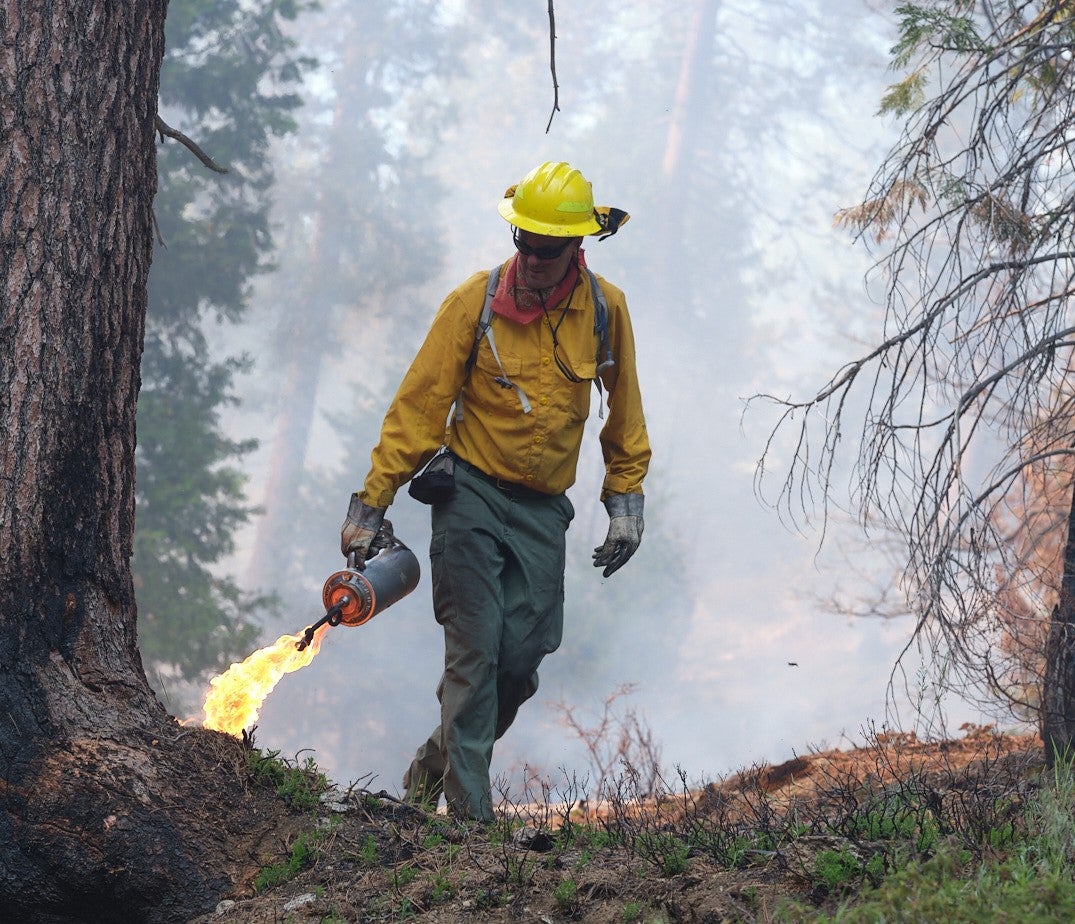
Good fire, bad fire
Many fire ecologists talk about the need to burn more acreage by putting “good fire” on the ground, such as through prescribed burning, while preventing “bad fire.” In forests like oak woodland, yellow pine and mixed conifer, good fire refers to the low-to-moderate severity burning that the dominant species are adapted to. They are typically ignited by lightning or by people to enrich and restore the land. Many such fires were set by Native Americans before the mid-19th century through the practice of cultural burning.
“I’m not exaggerating when I say that the very existence of montane conifer forest in California is at risk, especially in the southern part of the state.” — Hugh Safford, UC Davis forest ecologist
Before 1850, much more land burned each year in California compared to the present day. The study indicates that gap is beginning to close. Unfortunately, more of what is burning comprises damaging, high-severity fire.
That represents the most concerning result, say the authors: The average area of high-severity burning in the region is now above the best estimates of high-severity burning that took place before Euro-American settlement, even though overall burning in the modern day is still much lower.
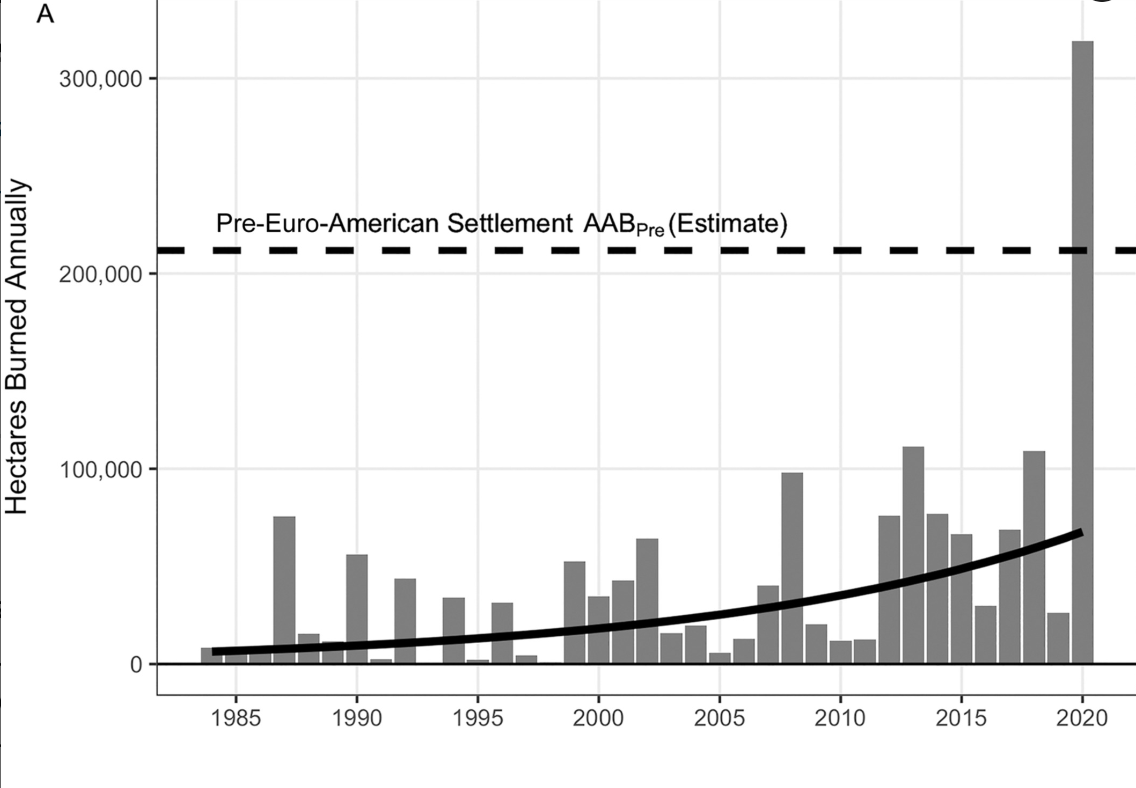
“At current or even projected rates of forest management by federal and state agencies, the amount of forest treated or restored is going to be a drop in the bucket compared to the need, and compared to the huge unmanaged areas that are going to burn, often at high severity,” said senior author Hugh Safford, a UC Davis fire ecologist and chief scientist of environmental public benefits corporation Vibrant Planet. “I’m not exaggerating when I say that the very existence of montane conifer forest in California is at risk, especially in the southern part of the state.”
A severe decade
Nine of California’s 10 biggest wildfires occurred within the past decade. The state’s record-breaking 2020 fire year — when nearly 9,900 fires burned 4.3 million acres — was the only year in which the annual area burned exceeded historical levels, but much of that burned at high severity.
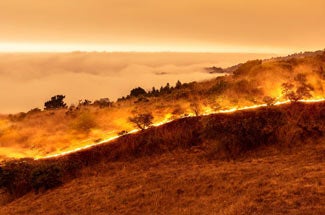
Related: California’s 2020 Wildfire Season
UC Davis report summarizes the record-breaking fire year and calls for a shift in strategy.
The authors say this trend is especially concerning because most of the low- to middle-elevation forest types affected are adapted to low-to-moderate severity burning. Excessively severe fires in these forests can harm landscapes and the habitat and ecosystem services they provide.
Other research carried out by the Safford Lab at UC Davis and its partners has shown that negative effects of severe burning in these forest types are serious and long-lasting to biodiversity, carbon storage, soil biogeochemistry, air quality and forest regeneration.
Getting the right mix
The study’s results highlight the need to better balance fire exclusion with management practices that proactively reduce forest fuels and increase resilience to climate change and other ecological disturbances.
“We need to burn much more each year, but we want the right mix,” Williams said. “The current trend is going in the wrong direction if we want to restore forests and their natural ecological processes.”
The study’s additional co-authors include Nic Enstice of the California Department of Conservation, Zack Steel of the USDA Forest Service Rocky Mountain Research Station, and Alison Paulson of USDA Forest Service Humboldt-Toiyabe National Forest.
More related stories
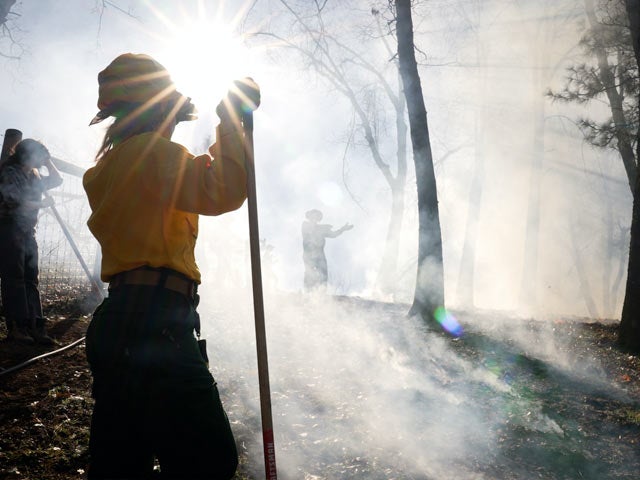
Little Fires: Landowners Learn to Burn
Empowering property owners to conduct prescribed burns
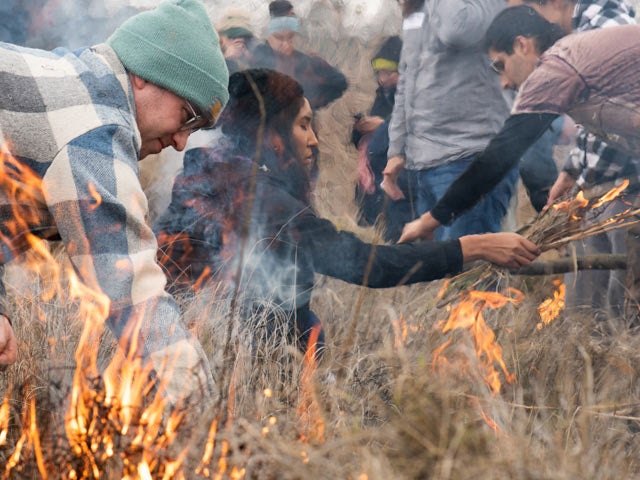
Rethinking Wildfire
Cultural burning and the art of not fighting fire
Media Resources
Media Contacts:
- John N. Williams, UC Davis Environmental Science and Policy, 530-744-9081, jnwill@ucdavis.edu
- Kat Kerlin, UC Davis News and Media Relations, 530-750-9195, kekerlin@ucdavis.edu
